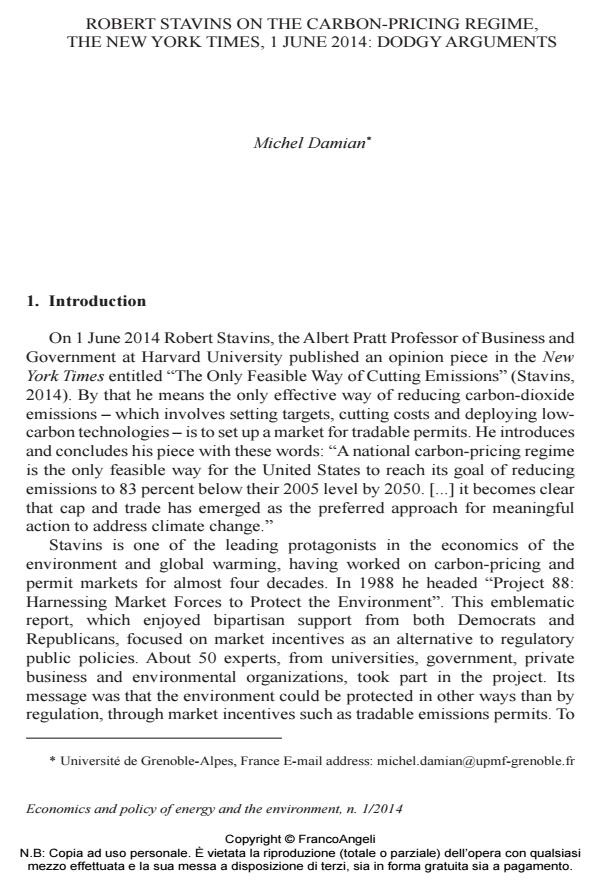Robert stav ins on the carbon-pricing regime, the New York times , 1 june 2014: dodgy arguments
Journal title ECONOMICS AND POLICY OF ENERGY AND THE ENVIRONMENT
Author/s Michel Damian
Publishing Year 2014 Issue 2014/1
Language English Pages 9 P. 53-61 File size 127 KB
DOI 10.3280/EFE2014-001003
DOI is like a bar code for intellectual property: to have more infomation
click here
Below, you can see the article first page
If you want to buy this article in PDF format, you can do it, following the instructions to buy download credits

FrancoAngeli is member of Publishers International Linking Association, Inc (PILA), a not-for-profit association which run the CrossRef service enabling links to and from online scholarly content.
This commentary discusses the opinion piece published on 1 June 2014 by Professor Robert Stavins in The New York Times. Professor Robert Stavins argues that "The Only Feasible Way of Cutting Emissions" is to set up a market for tradable permits. We review and criticize his mains arguments. Our purpose here is not to deny the possibility of carbon trading, but to call for a realistic assessment of the deployment of cap-and-trade systems and their limitations.
Keywords: Cap-and-trade, Command and control, Lead in gasoline, SO2 emissions, California AB32, Climate Change
Jel codes: H23, Q54, Q58
- Les grandes orientations de l’accord climatique de Paris 2015 Michel Damian, Mehdi Abbas, Pierre Berthaud, Catherine Aubertin, Michel Damian, Michel Magny, Claude Millier, Jacques Theys, Sébastien Treyer, in Natures Sciences Sociétés /2015 pp.S19
DOI: 10.1051/nss/2015015
Michel Damian, Robert stav ins on the carbon-pricing regime, the New York times , 1 june 2014: dodgy arguments in "ECONOMICS AND POLICY OF ENERGY AND THE ENVIRONMENT" 1/2014, pp 53-61, DOI: 10.3280/EFE2014-001003